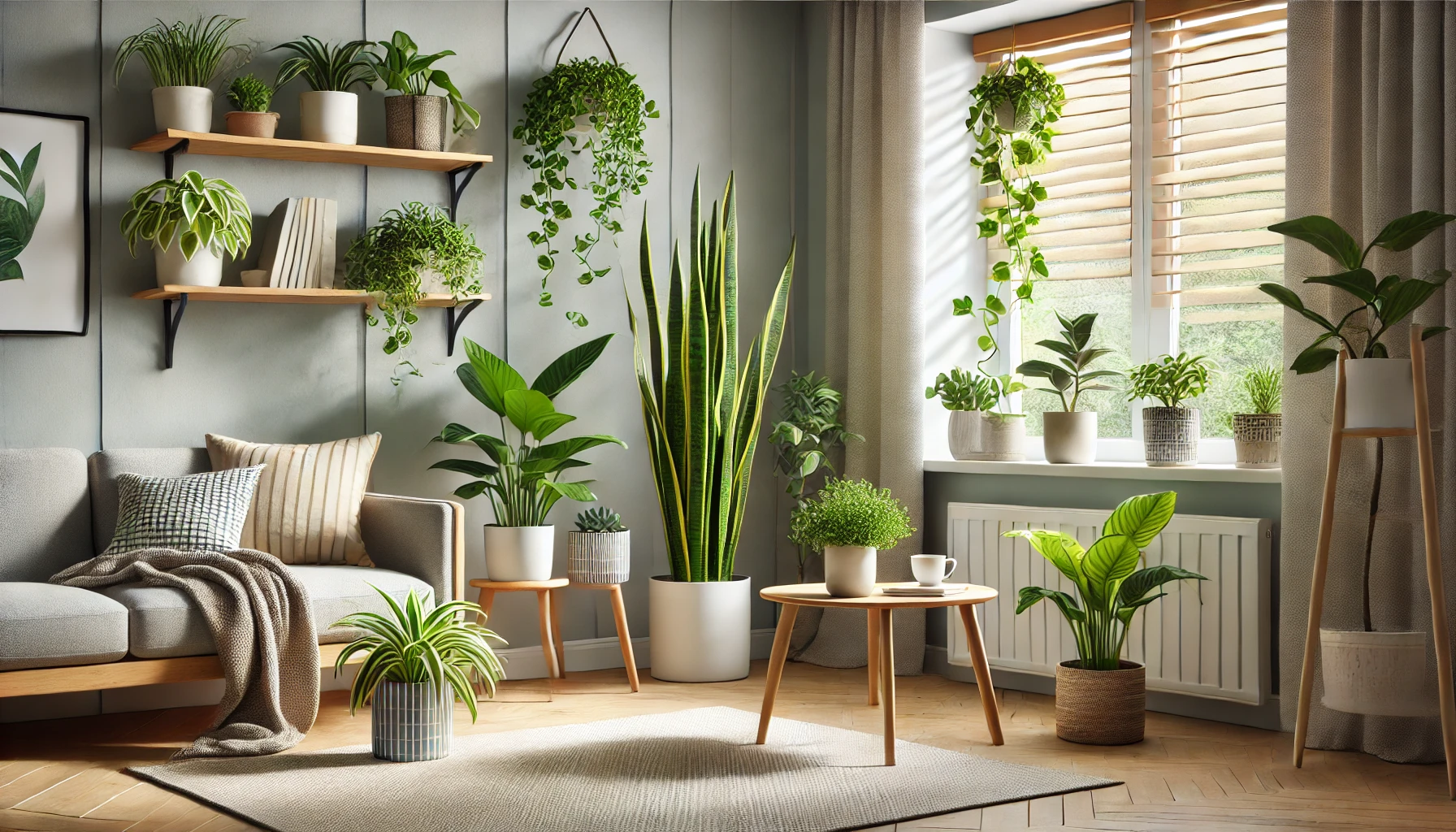Indoor plants do more than add beauty to your home; they also improve air quality by filtering toxins and releasing oxygen. Certain plants are particularly effective at removing harmful pollutants like formaldehyde, benzene, and carbon monoxide. In this guide, we’ll explore the best air-purifying plants and how to care for them to maximize their benefits.
How Plants Improve Air Quality
Plants act as natural air purifiers by absorbing toxins through their leaves and roots. During photosynthesis, they convert carbon dioxide into oxygen, creating fresher and healthier indoor air. Some plants even release moisture, increasing humidity and reducing airborne dust.
Top Air-Purifying Plants
1. Snake Plant (Sansevieria)
- Why It’s Great: Snake plants are excellent at removing toxins like formaldehyde and benzene. They release oxygen at night, making them perfect for bedrooms.
- Care Tips: Thrives in low to bright indirect light. Water sparingly, allowing soil to dry between waterings.
2. Peace Lily (Spathiphyllum)
- Why It’s Great: Peace lilies effectively filter ammonia, benzene, and formaldehyde. Their elegant white flowers add a touch of beauty to any room.
- Care Tips: Keep in medium to low indirect light and water when the topsoil is dry.
3. Spider Plant (Chlorophytum comosum)
- Why It’s Great: Spider plants are highly effective at removing carbon monoxide and other toxins. They’re low-maintenance and produce “baby” plants for propagation.
- Care Tips: Place in bright, indirect light and water when the soil feels dry.
4. Areca Palm (Dypsis lutescens)
- Why It’s Great: The Areca palm is a natural humidifier and removes airborne toxins. Its lush fronds make it a stunning addition to living rooms.
- Care Tips: Prefers bright, indirect light and consistently moist soil.
5. Boston Fern (Nephrolepis exaltata)
- Why It’s Great: Boston ferns excel at increasing humidity and filtering pollutants like formaldehyde.
- Care Tips: Keep in bright, indirect light and mist regularly to maintain humidity.
6. Rubber Plant (Ficus elastica)
- Why It’s Great: Rubber plants remove toxins like formaldehyde and improve air quality with their large, glossy leaves.
- Care Tips: Prefers bright, indirect light and evenly moist soil.
7. Aloe Vera
- Why It’s Great: Aloe vera removes benzene and formaldehyde while doubling as a medicinal plant for burns and cuts.
- Care Tips: Place in bright, indirect light and water sparingly.
8. Golden Pothos (Epipremnum aureum)
- Why It’s Great: Golden pothos is a powerful air purifier and one of the easiest plants to care for.
- Care Tips: Thrives in low to bright indirect light. Allow the soil to dry between waterings.
9. Bamboo Palm (Chamaedorea seifrizii)
- Why It’s Great: Bamboo palms filter out harmful chemicals and add a tropical vibe to your home.
- Care Tips: Prefers bright, indirect light and consistently moist soil.
10. Dracaena
- Why It’s Great: Dracaenas come in various types and are effective at removing toxins like xylene and trichloroethylene.
- Care Tips: Keep in low to medium indirect light and water when the topsoil dries out.
How to Maximize the Benefits of Air-Purifying Plants
1. Group Plants Together
Create clusters of plants to increase their collective air-purifying power.
2. Clean the Leaves Regularly
Dusty leaves can block a plant’s ability to absorb toxins. Wipe leaves gently with a damp cloth to keep them clean.
3. Use the Right Number of Plants
For noticeable air quality improvement, aim for at least one plant per 100 square feet of space.
4. Ensure Proper Care
Healthy plants are more effective at purifying air. Provide appropriate light, water, and nutrients to keep them thriving.
Additional Benefits of Air-Purifying Plants
- Increased Humidity: Helps prevent dry skin, respiratory issues, and static electricity.
- Reduced Stress: Studies show that indoor plants promote relaxation and improve mental well-being.
- Enhanced Sleep: Plants like snake plants and peace lilies improve bedroom air quality, contributing to better sleep.
Conclusion
Air-purifying plants are not only visually appealing but also offer numerous health benefits. By adding these plants to your home, you can create a cleaner, fresher, and more inviting environment. Whether you’re a seasoned plant parent or just starting, these low-maintenance options are a perfect addition to any space.
